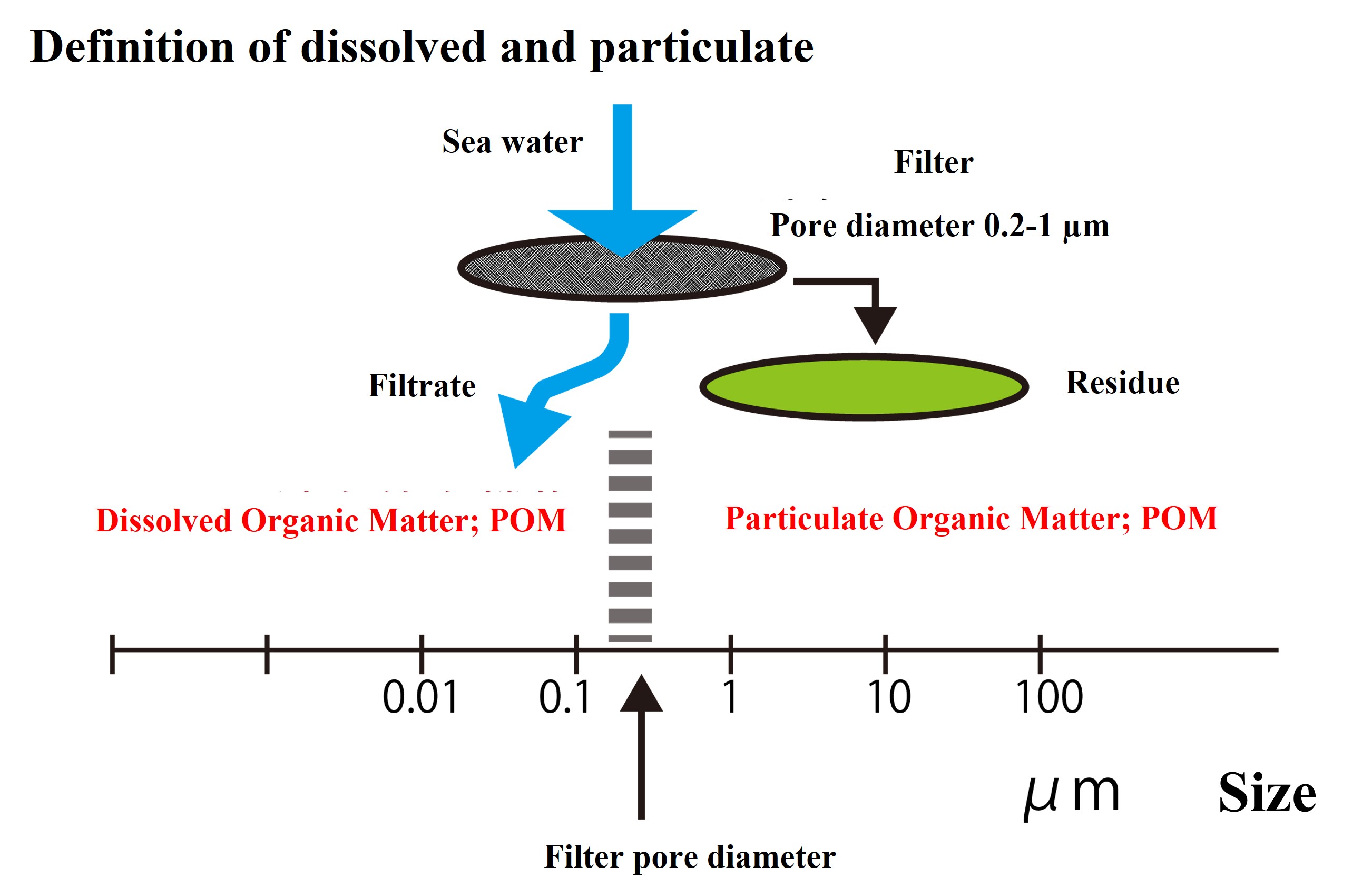Particulate and Dissolved Organic Matter
토픽 개요
-
-
Definition of dissolved and particulate forms of seawater constituents (important)
In the field of aquatic environmental science, including oceanography, we distinguish between "dissolved" and "particle" forms of matter in water. It is defined as the "dissolved" substances contained in water that is filtered through a filter with a pore diameter of 0.2 μm to 1.0 μm and the "particulate" substances trapped on the filter.
Please understand why it is better to separate by 0.2 (to 1.0) µm.

-
There is a difference in meaning between particles in seawater in oceanography and particles in water in physical chemistry and engineering (colloid science).
Here is a brief definition for those in colloid science. You may skip over it.
-
Classification diagram of dissolved organic matter (passed through 0.2 μm pore size filter)
In physical chemistry and physical engineering, there are "colloidal particles in a dissolved state". For example, the white color of milk is really a polymeric protein particle that can be several micrometers in size. In physical chemistry and physical engineering, there are "colloidal particles in a dissolved state". For example, the white color of milk is really a polymeric protein particle that can be several micrometers in size. These are "colloidal particles" in the "dissolved state" because they remain homogeneous for a certain time. In oceanography, dissolved and particulate are dichotomized, so the high molecular weight protein in milk is classified as a "particle state". This is different from the definition in physical chemistry and engineering.
This page provides an overview of the composition of dissolved organic matter.

-
